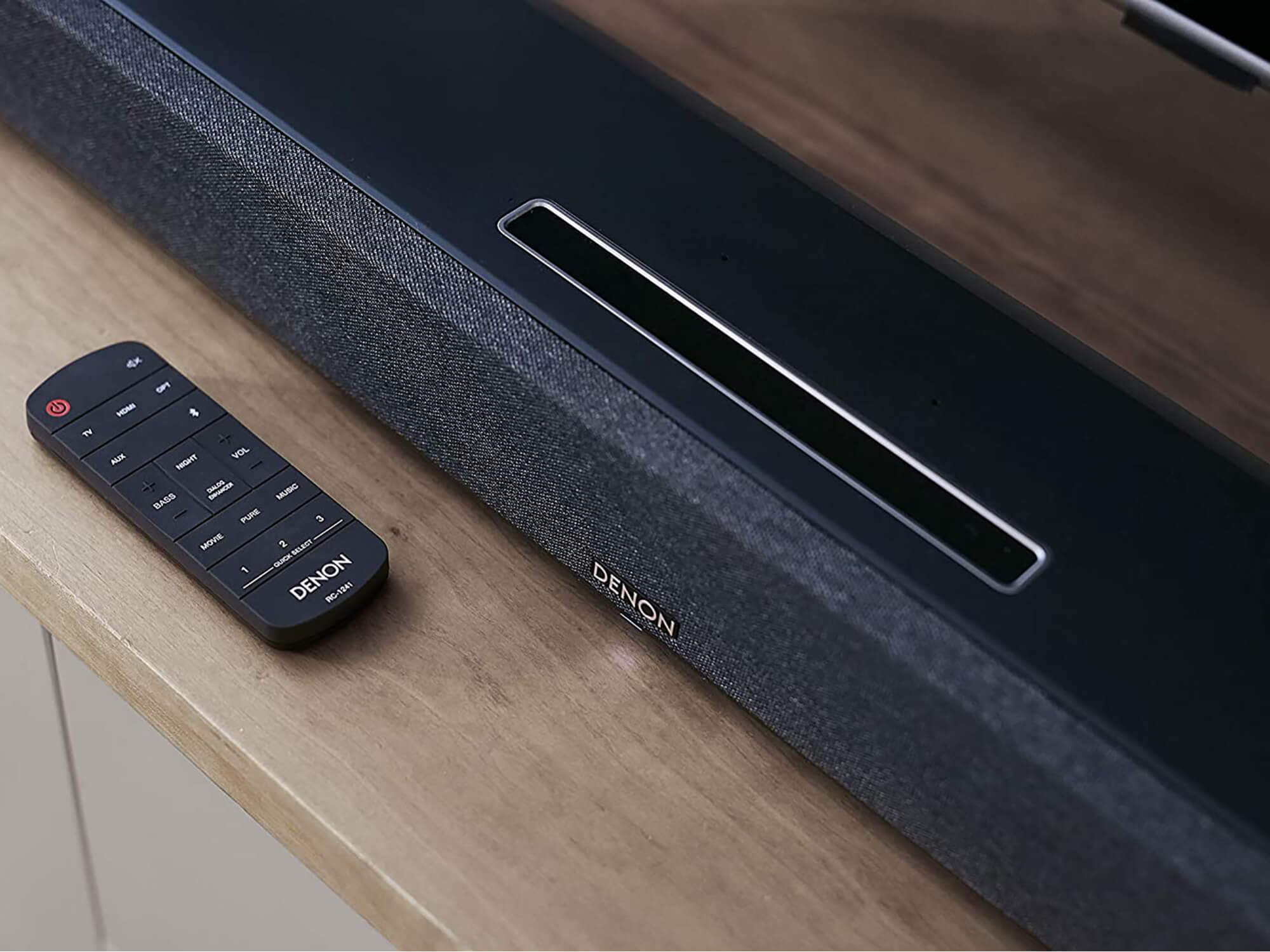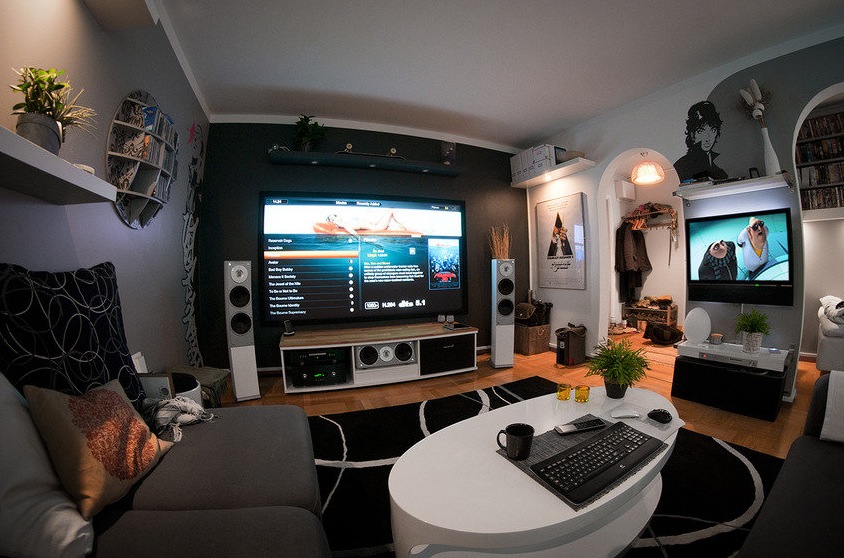
Sonos is an audio brand. Its speakers are some of the best in the industry. Sonos was originally founded in software development, but it has evolved to become an integrated network of Wi-Fi connected devices that can play music and TV shows in any room in your home.
With the help of an app, Sonos makes it easy to set up multi-room systems. It takes just a few minutes to set up your multi-room system using your iPhone, iPad, or Android phone. You can also start playing music in sync across all of your Sonos products in any room in your home.
Although the Sonos Play:1 speaker is the entry-level model in the Sonos line, it packs a powerful punch. It's one of the most affordable and best-sounding smart speakers you can buy, thanks to Sonos' Trueplay technology, which tunes your music to your environment.

The speaker is available in two colors: black and white. It has a grated design that covers the entire top of the speaker. It can be placed on a bookcase or on a desk and doesn't take up much space. It's a very simple looking speaker and that is what makes it stand apart.
You can also control the Play1 via Sonos' app from your smartphone. Sonos supports streaming services like Spotify, Apple Music, YouTube Music and YouTube Music. To get a better sound, you can add another Play:1 network to Sonos and use the Trueplay feature.
How to set up the Sonos Play
Before you can start playing music with your Play:1, you need to connect it to your wireless router. To do this, open the Sonos app on your phone or tablet and connect to your network's Wi-Fi. Next, select your network name.
Once the Sonos Play:1 has been connected, the app will show it as an available speaker and you can get started setting it all up. It is somewhat annoying that it must connect to your WiFi router. However, the Sonos apps does a great job of getting you started quickly.

Sonos recently updated its "S2” app to support Play.1 speakers. This means that they no longer need a separate bridge in order to communicate with your network. This is a big step forward for the product.
The Sonos Play:1 has been around for a while now, but it's finally got some significant updates that make it an excellent choice for people who want a great-sounding speaker with plenty of streaming services built in. The software has been improved and Trueplay is included. There are also more streaming services available than ever.
It's an excellent speaker for people who are looking for a smart speaker, but don't care about Alexa and Google Assistant. This is a great choice for those who are looking to purchase a Sonos Play:3 and don't want AirPlay 2 or voice assistant capabilities.
FAQ
Which is the best wireless speaker for TV?
The most advanced wireless speaker systems were designed for today's needs, not yesterday. Audio products must sound better than ever before today's technology.
Speakers today are lighter, smaller, more powerful, and versatile than ever before.
They are also less expensive than ever. Look for the best home theater speaker system for your budget.
An excellent way to find out what products match your expectations is to visit an electronics retailer and listen to them play music.
As you evaluate each speaker, pay special attention to bass response, clarity, volume control, and power output. These features are critical because they will determine the performance of the speaker system in different rooms.
Consider whether wired or WiFi connectivity is what you prefer. Wireless connections are more efficient than wired connections, but they do require extra equipment like a Wi-Fi router.
Wireless speakers are typically easier to setup than wired. Wireless speakers are less flexible than wired ones.
If you opt for a wireless model that has a range greater than 20 feet, you will be able to move freely with no interference.
How do you set up your home theater system.
Understanding how sound travels and interacts with objects is a good place to start. This includes knowing how many frequencies the object contains in terms of bass, treble, or midrange.
This can be done by listening to music on several devices and noting which ones are producing the most distortion.
Once you have determined the distortion levels of each device's audio, you can better decide where to put speakers.
The general rule of thumb is to place them closer together. This will result in less distortion and greater fidelity. Keep in mind, however, that their placement will also impact the space between them.
If you want to create a more immersive environment, consider placing multiple speakers within a single room.
You can go even further and surround yourself with speakers.
There are two main kinds of speaker systems. Passive systems comprise a subwoofer and some smaller speakers located throughout a home.
Because there are no moving parts, they can be simpler to install. They can distort easily if they are placed too close together.
Active systems are composed of a large, mounted woofer directly beneath a TV screen. These speakers are generally the most expensive but produce excellent sound. However, they are not practical for most homes and can run into the thousands of dollars.
Another option is to buy a receiver that connects passive and active speakers. These receivers typically include built-in amplifiers that ensure the audio signal reaches all speakers evenly.
However, these receivers aren't cheap, so unless you plan to replace your entire setup, they might not be worth the investment.
No matter the type of speaker system, ensure it is correctly installed.
Ask someone who does if you don't understand how to do it!
How can I select the right size speaker?
It would be best if you first considered how much space you have in your home. Are you looking to put speakers in every corner of the house? Do you prefer to add a few speakers to key areas or do you want to fill every corner with speakers?
The second factor to consider is what kind of music you plan to listen to. If you prefer classical music, you may need smaller speakers. For rock 'n’ roll fans, bigger speakers may be required.
Also, think about whether all your speakers should have wires or wireless. Wireless speakers use wires for power transfer and signal transmission. Wireless speakers don't require cables. However, wireless speakers are not as powerful than wired ones.
What kind of speakers do you recommend for my living-room?
Bookshelf speakers may be a good option if you are looking for high-quality sound.
These speakers are small and available in different sizes, depending on the space.
People love bookshelves for their great bass response. The better the sound, the deeper the bass.
It's also easy to install and use. Plug them in to the wall socket.
The subwoofer is another popular option for audiophiles. These speakers produce deep bass sounds that can enhance the performance of your home entertainment system.
A subwoofer can be found in most rooms, provided you're not afraid to spend more money.
However, keep in mind that subwoofers aren't suitable for every room. Because of their size, you may have trouble placing subwoofers in large rooms.
Nonetheless, this shouldn't be a concern. There are other options such as ceiling speakers or bookshelves.
Statistics
- Off - All H&R Block Tax Software Finish Line Coupons Finish Line Coupon: 40% off select styles Dyson promo code (wired.com)
- Amazon is likely to release new models very soon (there is an event on September 28), so you should wait until that event is over to buy. (wired.com)
- According to their research, Google's speech recognition software is 13 percent more accurate for men than women. (en.wikipedia.org)
- $10 off TurboTax Premier Service code 2022 H&R Block Coupon 20% (wired.com)
- According to a study released In March 2020, the six biggest tech development companies, Proceedings of the National Academy of Sciences of the United States of America (en.wikipedia.org)
External Links
How To
How do wireless speakers gain power?
Wireless speakers come in two varieties; battery-powered and plug-in powered. Both require power from an external source. They can be powered by a wall socket. However, it is important to plan ahead for wireless power.
Wireless speaker systems often rely on solar power or batteries for their power. These devices have a limited range and need to be close to a charging station. The device will cease to function if you move it from its charging station.
This problem can be avoided by allowing your home entertainment system use rechargeable batteries. These devices are more durable than regular batteries and easier to install.
This setup allows you to position your equipment anywhere you want. This setup allows you to place your equipment wherever you want. You can also mount the speakers under your cabinets in your kitchen and listen to music as you cook.
Make sure you know how long it takes for each component to be fully charged. The charging time for an amplifier might take three hours, while that of a Bluetooth receiver may only take 30 minutes. Be aware of any downtime that may occur during this period.
Combinations of wired or wireless components are possible. You can plug in your speakers to increase range. Your wireless transmitter will let you place your speakers wherever you want them to be.
A good rule of thumb is always to try to buy products designed to work together. An example is buying an amplifier as well as a Bluetooth receiver simultaneously. They should fit into one another's slots to maximize their combined features.